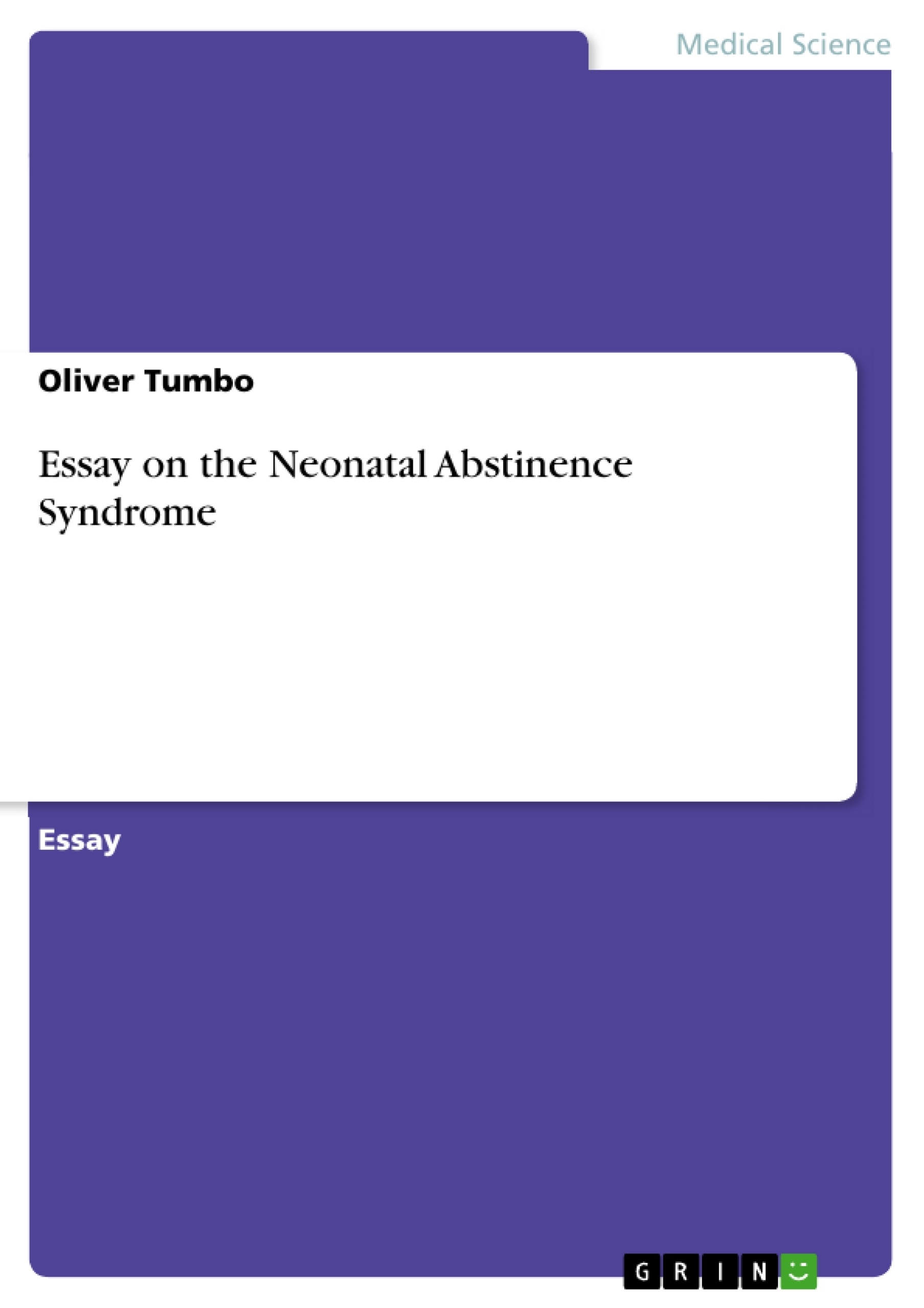Neonatal Abstinence Syndrome (NAS) can be described as a problem or condition prevalent in newborn children who have been exposed to addictive prescription or illegal drugs while they were developing in their mother’s wombs (Queensland Maternity and Neonatal Clinical, 2010). The condition often results after the mother of an unborn child uses opiate or narcotic drugs for example heroin, oxycodone, methadone, codeine or buprenorphine. The condition has many adverse effects on the newborn child. The condition shares similar symptoms and may be confused easily with other diseases prevalent in children (Matic, 2008). However, various tests help to diagnose the condition. The diagnosis of the condition mainly depends on a study of the kind of drugs that the mother used, and the same drug may be used in the treatment process (MacMullen, Dulski, & Blobaum, 2014). More research on the NAS condition is vital in today’s world where drug and substance abuse among expectant women is on the increase. The number of cases reported with such conditions globally is on the rise. Thus, more research is needed to show the various factors that can lead to the condition.
Inhaltsverzeichnis (Table of Contents)
- Introduction
- Methods
- Results
- Causes of Neonatal Abstinence Syndrome (NAS)
- Symptoms
- Diagnosis and Treatment
- Management and Treatment
- Discussion
- Conclusion
Zielsetzung und Themenschwerpunkte (Objectives and Key Themes)
This paper aims to provide a comprehensive overview of Neonatal Abstinence Syndrome (NAS), focusing on its symptoms, diagnosis, treatment, and management. The paper draws upon a range of scholarly works to shed light on this condition and its impact on newborns.
- Causes and types of NAS
- Symptoms and their variability
- Diagnostic tests and their significance
- Treatment approaches and their effectiveness
- The impact of NAS on infant health and development
Zusammenfassung der Kapitel (Chapter Summaries)
The introduction defines NAS as a condition affecting newborns exposed to addictive drugs during prenatal development. It highlights the prevalence of NAS and the need for further research to understand its causes and management.
The methods section outlines the paper's approach, which involves reviewing existing scholarly works on NAS with a focus on symptoms, diagnosis, treatment, and management. The section also emphasizes the importance of supporting infants suffering from NAS and addressing prenatal parenting failures.
The results section explores the causes of NAS, distinguishing between the two types of NAS. It details the symptoms of NAS, emphasizing their variability depending on factors such as the type and duration of drug use and the infant's maturity at birth. The section also discusses the various diagnostic tests used to assess the level of infant dependence on drugs, including urine tests, toxicology screening, and immunoassays.
The management and treatment section discusses the various approaches to treating NAS, highlighting the importance of individualized treatment plans based on the infant's specific needs. It explores the use of pharmacotherapy for infants with severe NAS, emphasizing the benefits and challenges of this approach.
The discussion section highlights the potential psychological and neurological problems that can arise from prenatal drug exposure. It emphasizes the rising incidence of NAS and the need for better-tailored treatment protocols.
Schlüsselwörter (Keywords)
Neonatal Abstinence Syndrome, drug exposure, prenatal drug use, symptoms, diagnosis, treatment, management, infant health, drug withdrawal, pharmacotherapy, opioid withdrawal, prenatal parenting, public health, infant morbidity.
- Arbeit zitieren
- Oliver Tumbo (Autor:in), 2015, Essay on the Neonatal Abstinence Syndrome, München, GRIN Verlag, https://www.grin.com/document/299683



